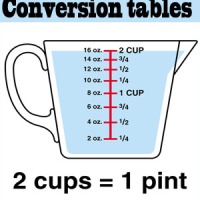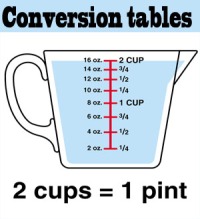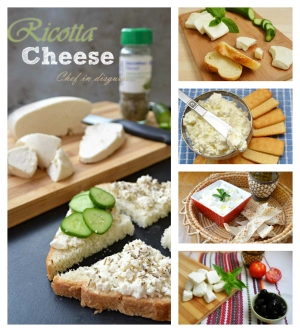Nabulsi (or naboulsi) cheese is one of the most popular white brined cheeses made in the Middle East. Its name denotes its place of origin, Nablus, Palestine and it is well-known throughout Palestine, Lebanon, Syria and Jordan.Nabulsi cheese is produced primarily from goat milk but sheep’s milk can also be used. Nabulsi cheese is white and rectangular in shape. It is semi-hard with no gas holes. It becomes soft and elastic when heated making it idea for frying or grilling.
Nabulsi cheese can be eaten fresh as salty table cheese, can be used as a stuffing for phylo dough, short crust pastry or a simple pita pocket. Fried in oil it makes a great appetizer, sweetened it can be used in different middle eastern desserts such as kinafeh or kataief.
Growing up it was always my grandmother who sent us the nabulsi cheese we needed for a whole year. She bought it from people who have their own goats and are specialized in making this type of cheese. Then my parents decided to give making nabulsi cheese at home and the results were amazing, only they made a variety that is less salty and less firm that can last in the fridge for a couple of weeks as opposed to the firm salty nabulsi cheese that you can store at room temperature for up to a year. I am sharing both recipes with you today.
I personally started making cheese thanks to John over at from the Bartolini kitchens and Tanya from Chica Andalusa. It all started with ricotta and when you taste homemade cheese there is really no turning back. I made cottage cheese and yogurt cheese, feta cheese and now the queen of all cheeses, Nabulsi cheese

The milk:
You can make Nabulsi cheese with fresh unboiled goat milk or sheep milk. Sheep milk tends to have more fat and more protein and more milk solids when compared to goat cheese. Sheep milk will give you a greater amount of cheese but goat milk will give you a better tasting cheese that will last longer.You cannot use ultra-pasteurized milk .The temperature and time combination is lethal to bacteria, killing virtually all that would be beneficial in cheese making.
Additional information on where you can find raw milk in the USA can be found at here
To boil or not to boil:
To make Nabulsi cheese you need to start with fresh unboiled milk as with pasteurization, boiling changes the milk in a way that prevents the formation of the large firm curds needed to make nabulsi cheese.The cheese will be boiled after it is finished to sterilize it.
Rennet:
you can use tablet rennet or liquid rennet. You may find liquid rennet easier to measure accurately. 1 tsp Liquid rennet equals 1 rennet tablet. 1 rennet tablet is used for 20 liters of milk
Home made Nabulsi cheese
5 liters Fresh sheep milk
1/4 tablet of rennet
Salt
2 cups water
Heat the milk up tp 40 C or until it is slightly warm to the touch
crush 1/4 tablet of rennet using the back of a spoon , add 2 cups of water and stir till it is completely dissolved
Add the rennet water to the milk and stir well to make sure the rennet is well distributed throughout the milk
Once you add the rennet you need make sure not to disturb the milk, cover the milk pot with a lid and place it in a warm place covered with a blanket
Leave undisturbed for 2 hours. After two hours you will find that the milk has separated into one big block of cheese and whey
Using a plate of a big ladle transfer the cheese to a colander lined with a cheese cloth or a clean fabric with fine weave. You want to keep the cheese curds as big as possible, that is why you use a plate or a big ladle.
Allow the cheese to drain for a couple of hours, once it starts to firm up a little,sprinkle with a little salt (1/4 teaspoon) gather the edges of the cheese cloth to cover the cheese and place a heavy weight on top of it to help it drain, leave over night
The next morning your cheese should be one mass that is slightly firm
Flip over a plate that you have sprinkled with salt
Cut into rectangles and sprinkle the top with salt. At this stage the cheese is still soft and needs to be handled with care. the salt will draw out more whey from the cheese and allows it to harden.

leave the cheese undisturbed till evening, flip and sprinkle with salt and leave over night.
The next morning flip the cheese again and sprinkle with a little salt and leave till the evening.
In the evening arrange the cheese in a container separating each layer with nylon bag that you have sprinkled with salt.
Leave in the fridge for 3-7 days. During this time the cheese will continue to hard due to the presence of the salt.

After 3-7 days your cheese is ready to eat, you only need to boil it first.
To boil the cheese, heat water in a pot till it boils then add the cheese a couple of rectangles at a time, lower the heat and cook for 3-5 minutes.
Using a slotted spoon take the cheese gently out of the water and allow to cool on a plate
Boiling softens the cheese that is why you need to handle it with care until it cools and firms up again
Nabulsi cheese made this way will last up to 2 weeks in the fridge.
If you want to store the cheese for a year you will need to make the following alterations to the instructions
- instead of leaving the cheese outside the fridge for 2 days, you need to leave it out for a week sprinkling with salt each morning and evening (the amount of salt you sprinkle is small, similar to what you will sprinkle over a dish or a meal but the amount adds up because you repeat the salting twice a day) the salt is meant to draw out the whey and harden the cheese and that will allow it to live longer
- To brine the cheese you need 1 cup of salt for every 6 cups of water. Bring to a boil, add flavoring agents (traditionally mahlab and mastic are used)
- If you want to flavor the cheese you can add 1/2 teaspoon of mastic and 1/2 teaspoon of mahlab (both whole not ground) and wrap them in a cheese cloth or another fine weave clean fabric and add them to the boiling water after the cheese has set in the fridge.
Another option would be to add only the mahlab to the boiling water and add the mistaka to the jar you store the cheese in. You slightly grind 1 teaspoon of mastic (you just want to break up the crystals a little) and sprinkle it between the layers of cheese in the jar. - If you would like to add the black seeds do it after the straining the cheese for a couple of hours when you sprinkle the salt and cover it and weight it early in the cheese making process. Do remember to clean the black seeds, preferably wash them and allow them to dry or they will be a source of contamination and may ruin your cheese. There is also a slight risk that the black seeds will cause the cheese to be darker in color. I personally don’t add black seeds to nabulsi cheese
- Add the cheese rectangle 4-5 at a time and boil until the cheese starts to bubble slightly
- Using a slotted spoon take the cheese out of the brine and allow to cool on a plate
- Repeat with the remaining cheese till you have boiled the entire amount
- Allow the brine to cool
- Arrange the cheese in a jar and cover with the cooled brine
- Store in a cool place for up to a year.
- Cheese made this way will be quite salty but that is necessary to preserve it, when you want to eat it you can either soak it over night in water or boil in water for a couple of minutes
Trouble shoot
My milk did not form clots
- Use of ultra-pasteurized dairy products.
- Over-heating the milk and thereby killing the live cultures.
- Using rennet that’s too old or not using enough.
- Not waiting long enough for the curd to form.
My cheese won’t firm up
- You did not sprinkle with salt
- The weight you used to press the cheese is not heavy enough
My cheese crumbled when I boiled it
- you boiled it for too long
- you did not leave it in the fridge long enough to harden
So you have made Nabulsi cheese and now you don’t know what to do with it?
How about these recipes for a start
Fteer falahi (Cheese and anise flat bread































